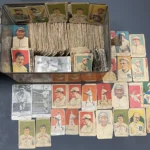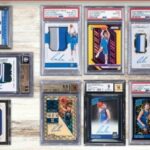Baseball cards are more than just pieces of cardboard with players’ images on them; they are intricate parts of sports history, nostalgia, and passion for countless collectors worldwide. The journey of vintage baseball cards—from their humble beginnings in the 19th century to becoming highly prized collector’s items—tells a fascinating story of innovation, cultural impact, and evolution.
Early Beginnings in the 19th Century
The concept of baseball cards can be traced back to the late 1800s when tobacco companies saw an opportunity to boost sales by including collectible cards in cigarette packs. The earliest known cards were distributed by companies like Allen & Ginter and Goodwin & Company. These cards featured black-and-white photographs of baseball players and served not only as promotional tools but also as early memorabilia for baseball fans.
The Turn of the Century: T206 and Beyond
In the early 20th century, the American Tobacco Company released the iconic T206 series between 1909 and 1911. This series included prominent players such as Ty Cobb, Walter Johnson, and the legendary Honus Wagner. The rarity of some cards, like the Honus Wagner card, has made them incredibly valuable, with the Wagner card often selling for millions of dollars at auctions. The intrigue surrounding these early cards laid the groundwork for the vibrant hobby that would follow.
The Golden Age: 1930s-1950s
The 1930s saw the entry of gum and candy companies into the baseball card market. Companies like Goudey Gum produced colorful, artistically illustrated cards that captured the public’s imagination. The popularity of baseball cards continued to grow through the 1940s and 1950s, culminating in what many consider the “Golden Age” of baseball cards.
In 1952, Topps, a company initially known for chewing gum, released its first full set of baseball cards, which included the now-famous Mickey Mantle rookie card. The 1952 Topps Mantle card is often revered as the “Holy Grail” of post-war baseball cards. Its iconic design, coupled with Mantle’s storied career with the New York Yankees, elevates it to a coveted status among collectors.
Post-War Boom and Modernization
The post-World War II era saw baseball cards become mainstream collectibles. The introduction of bubblegum cards captured the interest of younger fans. During this period, the industry experienced several significant changes:
- Increased Production: Companies like Topps, Bowman, and Fleer began producing cards in larger quantities.
- Expansion of Sets: Card sets became more extensive, featuring more players and special series.
- Grading Systems: Professional grading systems were introduced, enabling collectors to assess the condition and value of cards systematically.
The 1980s and 1990s: A Boom Period
The 1980s and 1990s witnessed an explosion in the popularity and commercialization of baseball cards. The hobby attracted a vast number of collectors, driven partly by the economic boom and a sense of nostalgia among Baby Boomers. However, this period also brought challenges:
- Overproduction: Manufacturers produced cards in massive quantities, leading to a decline in scarcity and value.
- Innovation: Companies introduced various innovations like holographic cards and autographed inserts to reignite collector interest.
21st Century: Digital Transformation and High-Value Auctions
The turn of the 21st century brought more changes to the baseball card industry. With the rise of the internet, online marketplaces such as eBay revolutionized how cards were bought and sold. This increased accessibility led to record-breaking sales of rare vintage cards at auctions.
Additionally, the advent of digital cards and blockchain technology introduced new formats for collectors. Digital platforms like Topps Now create limited-edition cards that capture moments during the baseball season, adding a modern twist to the hobby.
Conclusion: The Enduring Legacy
From simple promotional tools to invaluable collectibles, vintage baseball cards have a storied past that reflects broader changes in society and culture. The allure of cards featuring legends like **Mickey Mantle** continues to captivate new generations of collectors. While the industry has evolved, the nostalgic magnetism and historical significance of these cards remain steadfast.




Leave a Reply